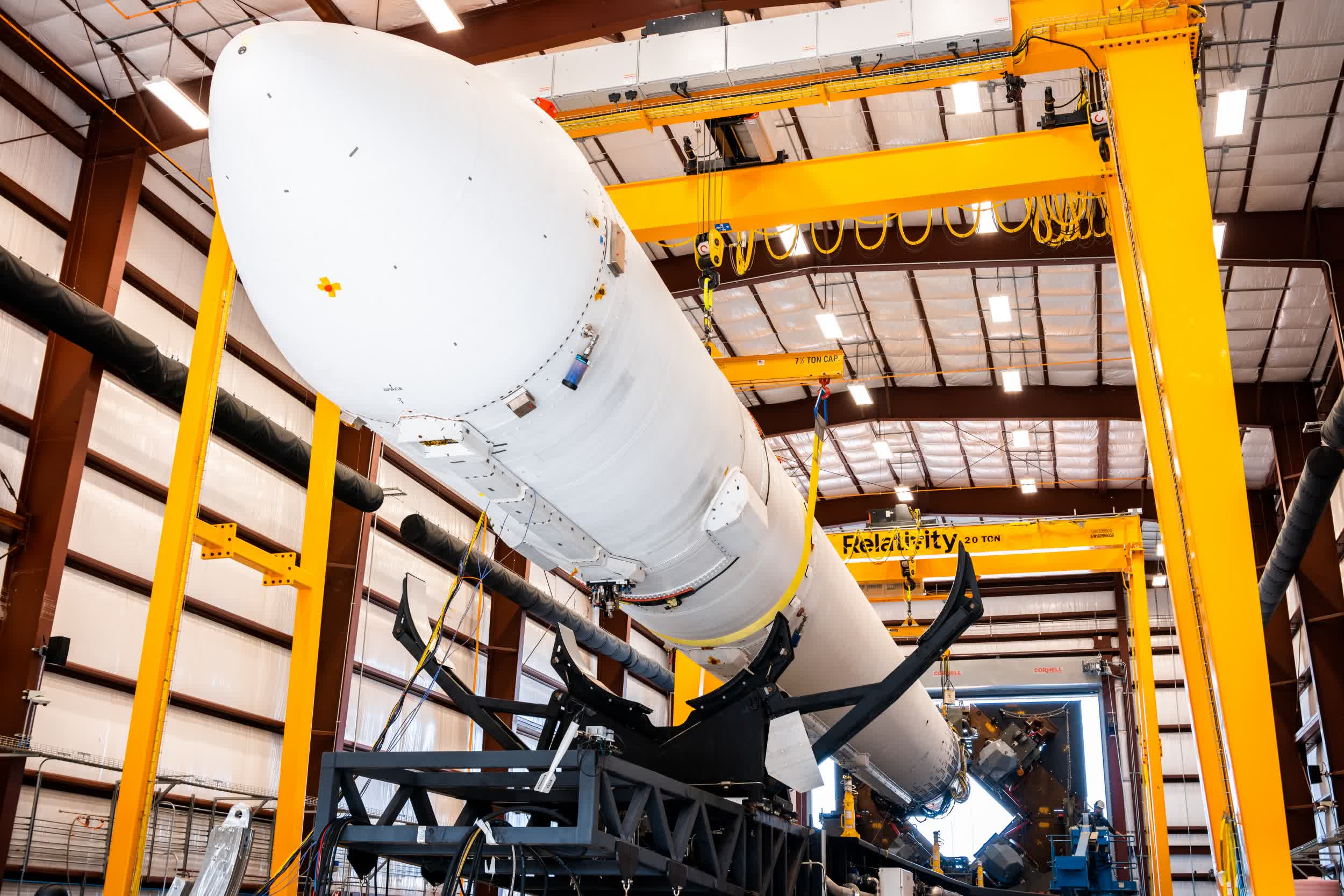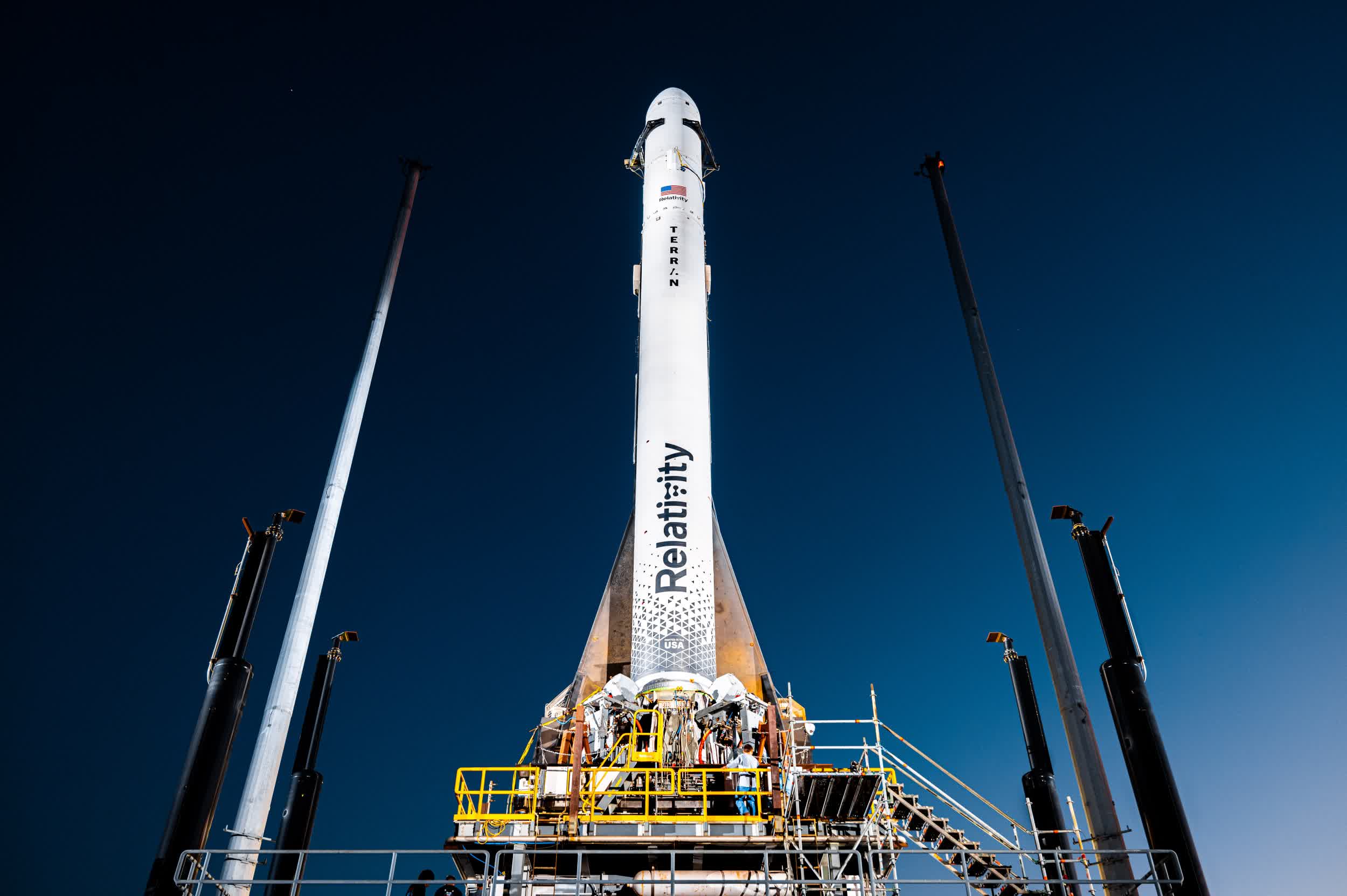What just happened? Relativity Space is ready to launch the world's first 3D printed rocket into space. The California-based startup recently secured a launch license from the Federal Aviation Administration (FAA) and even secured a launch date. Should everything go according to plan, the first launch of Terran 1, called GLHF (short for Good Luck, Have Fun), will happen on March 8, 2023, from Launch Complex 16 in Cape Canaveral, Florida, and will be livestreamed on the Internet.
The launch will be Relativity's first orbital attempt. The rocket is designed to carry a payload of up to 2,756 pounds. Unsurprisingly, the startup will not be sending a customer payload into space as part of its maiden voyage.
Relativity describes Terran 1 as the largest 3D printed object to attempt orbital flight. The two-stage, expendable rocket measures 110 feet tall and 7.5 feet wide, and weighs 20,458 pounds dry. It is 85 percent 3D printed by mass, but Relativity is aiming to reach 95 percent eventually.

Helping fight gravity are nine Aeon engines on the first stage and a single Aeon Vac on the second stage. A combination of liquid oxygen and liquid natural gas will fuel the rocket. The startup said its engines will be easier to transition to methane fuel for future missions to Mars.
Terran 1's successor, Terran R, was unveiled in 2021. It will measure 216 feet tall by 16 feet wide with the ability to put more than 44,100 pounds of cargo into low Earth orbit. The 3D printed and fully reusable rocket is expected to launch in 2024.
Cofounder and CEO Tim Ellis, a former Blue Origin employee, said it has been a truly wild ride getting to this point, and it was way harder than he ever imagined. "There is a very bright future ahead for Relativity Space," he added.
Relativity's other co-founder, Jordan Noone, spent time at Blue Origin and SpaceX before helping to create the startup.
Relativity elected to forego one final static-fire test of the first stage. A company spokesperson told SpaceNews that Relativity had to weigh the pros and cons of added wear and tear from another test flight versus the heightened possibility of having to abort during their first launch attempt.
